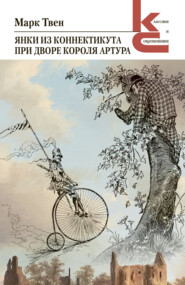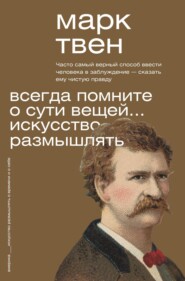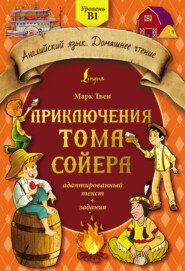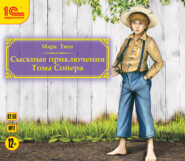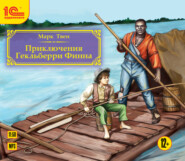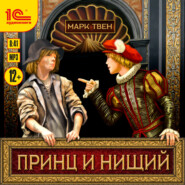По всем вопросам обращайтесь на: info@litportal.ru
(©) 2003-2025.
✖
A Tramp Abroad
Автор
Год написания книги
2015
Настройки чтения
Размер шрифта
Высота строк
Поля
For several weeks I had been culling all the information I could about Italy, from tourists. The tourists were all agreed upon one thing – one must expect to be cheated at every turn by the Italians. I took an evening walk in Turin, and presently came across a little Punch and Judy show in one of the great squares. Twelve or fifteen people constituted the audience. This miniature theater was not much bigger than a man’s coffin stood on end; the upper part was open and displayed a tinseled parlor – a good-sized handkerchief would have answered for a drop-curtain; the footlights consisted of a couple of candle-ends an inch long; various manikins the size of dolls appeared on the stage and made long speeches at each other, gesticulating a good deal, and they generally had a fight before they got through. They were worked by strings from above, and the illusion was not perfect, for one saw not only the strings but the brawny hand that manipulated them – and the actors and actresses all talked in the same voice, too. The audience stood in front of the theater, and seemed to enjoy the performance heartily.
When the play was done, a youth in his shirt-sleeves started around with a small copper saucer to make a collection. I did not know how much to put in, but thought I would be guided by my predecessors. Unluckily, I only had two of these, and they did not help me much because they did not put in anything. I had no Italian money, so I put in a small Swiss coin worth about ten cents. The youth finished his collection trip and emptied the result on the stage; he had some very animated talk with the concealed manager, then he came working his way through the little crowd – seeking me, I thought. I had a mind to slip away, but concluded I wouldn’t; I would stand my ground, and confront the villainy, whatever it was. The youth stood before me and held up that Swiss coin, sure enough, and said something. I did not understand him, but I judged he was requiring Italian money of me. The crowd gathered close, to listen. I was irritated, and said – in English, of course:
“I know it’s Swiss, but you’ll take that or none. I haven’t any other.”
He tried to put the coin in my hand, and spoke again. I drew my hand away, and said:
“No, sir. I know all about you people. You can’t play any of your fraudful tricks on me. If there is a discount on that coin, I am sorry, but I am not going to make it good. I noticed that some of the audience didn’t pay you anything at all. You let them go, without a word, but you come after me because you think I’m a stranger and will put up with an extortion rather than have a scene. But you are mistaken this time – you’ll take that Swiss money or none.”
The youth stood there with the coin in his fingers, non-plused and bewildered; of course he had not understood a word. An English-speaking Italian spoke up, now, and said:
“You are misunderstanding the boy. He does not mean any harm. He did not suppose you gave him so much money purposely, so he hurried back to return you the coin lest you might get away before you discovered your mistake. Take it, and give him a penny – that will make everything smooth again.”
I probably blushed, then, for there was occasion. Through the interpreter I begged the boy’s pardon, but I nobly refused to take back the ten cents. I said I was accustomed to squandering large sums in that way – it was the kind of person I was. Then I retired to make a note to the effect that in Italy persons connected with the drama do not cheat.
The episode with the showman reminds me of a dark Chapter in my history. I once robbed an aged and blind beggar-woman of four dollars – in a church. It happened this way. When I was out with the Innocents Abroad, the ship stopped in the Russian port of Odessa and I went ashore, with others, to view the town. I got separated from the rest, and wandered about alone, until late in the afternoon, when I entered a Greek church to see what it was like. When I was ready to leave, I observed two wrinkled old women standing stiffly upright against the inner wall, near the door, with their brown palms open to receive alms. I contributed to the nearer one, and passed out. I had gone fifty yards, perhaps, when it occurred to me that I must remain ashore all night, as I had heard that the ship’s business would carry her away at four o’clock and keep her away until morning. It was a little after four now. I had come ashore with only two pieces of money, both about the same size, but differing largely in value – one was a French gold piece worth four dollars, the other a Turkish coin worth two cents and a half. With a sudden and horrified misgiving, I put my hand in my pocket, now, and sure enough, I fetched out that Turkish penny!
Here was a situation. A hotel would require pay in advance – I must walk the street all night, and perhaps be arrested as a suspicious character. There was but one way out of the difficulty – I flew back to the church, and softly entered. There stood the old woman yet, and in the palm of the nearest one still lay my gold piece. I was grateful. I crept close, feeling unspeakably mean; I got my Turkish penny ready, and was extending a trembling hand to make the nefarious exchange, when I heard a cough behind me. I jumped back as if I had been accused, and stood quaking while a worshiper entered and passed up the aisle.
I was there a year trying to steal that money; that is, it seemed a year, though, of course, it must have been much less. The worshipers went and came; there were hardly ever three in the church at once, but there was always one or more. Every time I tried to commit my crime somebody came in or somebody started out, and I was prevented; but at last my opportunity came; for one moment there was nobody in the church but the two beggar-women and me. I whipped the gold piece out of the poor old pauper’s palm and dropped my Turkish penny in its place. Poor old thing, she murmured her thanks – they smote me to the heart. Then I sped away in a guilty hurry, and even when I was a mile from the church I was still glancing back, every moment, to see if I was being pursued.
That experience has been of priceless value and benefit to me; for I resolved then, that as long as I lived I would never again rob a blind beggar-woman in a church; and I have always kept my word. The most permanent lessons in morals are those which come, not of booky teaching, but of experience.
Chapter XLVIII
In Milan we spent most of our time in the vast and beautiful Arcade or Gallery, or whatever it is called. Blocks of tall new buildings of the most sumptuous sort, rich with decoration and graced with statues, the streets between these blocks roofed over with glass at a great height, the pavements all of smooth and variegated marble, arranged in tasteful patterns – little tables all over these marble streets, people sitting at them, eating, drinking, or smoking – crowds of other people strolling by – such is the Arcade. I should like to live in it all the time. The windows of the sumptuous restaurants stand open, and one breakfasts there and enjoys the passing show.
We wandered all over the town, enjoying whatever was going on in the streets. We took one omnibus ride, and as I did not speak Italian and could not ask the price, I held out some copper coins to the conductor, and he took two. Then he went and got his tariff card and showed me that he had taken only the right sum. So I made a note – Italian omnibus conductors do not cheat.
Near the Cathedral I saw another instance of probity. An old man was peddling dolls and toy fans. Two small American children bought fans, and one gave the old man a franc and three copper coins, and both started away; but they were called back, and the franc and one of the coppers were restored to them. Hence it is plain that in Italy, parties connected with the drama and the omnibus and the toy interests do not cheat.
The stocks of goods in the shops were not extensive, generally. In the vestibule of what seemed to be a clothing store, we saw eight or ten wooden dummies grouped together, clothed in woolen business suits and each marked with its price. One suit was marked forty-five francs – nine dollars. Harris stepped in and said he wanted a suit like that. Nothing easier: the old merchant dragged in the dummy, brushed him off with a broom, stripped him, and shipped the clothes to the hotel. He said he did not keep two suits of the same kind in stock, but manufactured a second when it was needed to reclothe the dummy.
In another quarter we found six Italians engaged in a violent quarrel. They danced fiercely about, gesticulating with their heads, their arms, their legs, their whole bodies; they would rush forward occasionally with a sudden access of passion and shake their fists in each other’s very faces. We lost half an hour there, waiting to help cord up the dead, but they finally embraced each other affectionately, and the trouble was over. The episode was interesting, but we could not have afforded all the time to it if we had known nothing was going to come of it but a reconciliation. Note made – in Italy, people who quarrel cheat the spectator.
We had another disappointment afterward. We approached a deeply interested crowd, and in the midst of it found a fellow wildly chattering and gesticulating over a box on the ground which was covered with a piece of old blanket. Every little while he would bend down and take hold of the edge of the blanket with the extreme tips of his fingertips, as if to show there was no deception – chattering away all the while – but always, just as I was expecting to see a wonder feat of legerdemain, he would let go the blanket and rise to explain further. However, at last he uncovered the box and got out a spoon with a liquid in it, and held it fair and frankly around, for people to see that it was all right and he was taking no advantage – his chatter became more excited than ever. I supposed he was going to set fire to the liquid and swallow it, so I was greatly wrought up and interested. I got a cent ready in one hand and a florin in the other, intending to give him the former if he survived and the latter if he killed himself – for his loss would be my gain in a literary way, and I was willing to pay a fair price for the item – but this impostor ended his intensely moving performance by simply adding some powder to the liquid and polishing the spoon! Then he held it aloft, and he could not have shown a wilder exultation if he had achieved an immortal miracle. The crowd applauded in a gratified way, and it seemed to me that history speaks the truth when it says these children of the south are easily entertained.
We spent an impressive hour in the noble cathedral, where long shafts of tinted light were cleaving through the solemn dimness from the lofty windows and falling on a pillar here, a picture there, and a kneeling worshiper yonder. The organ was muttering, censers were swinging, candles were glinting on the distant altar and robed priests were filing silently past them; the scene was one to sweep all frivolous thoughts away and steep the soul in a holy calm. A trim young American lady paused a yard or two from me, fixed her eyes on the mellow sparks flecking the far-off altar, bent her head reverently a moment, then straightened up, kicked her train into the air with her heel, caught it deftly in her hand, and marched briskly out.
We visited the picture-galleries and the other regulation “sights” of Milan – not because I wanted to write about them again, but to see if I had learned anything in twelve years. I afterward visited the great galleries of Rome and Florence for the same purpose. I found I had learned one thing. When I wrote about the Old Masters before, I said the copies were better than the originals. That was a mistake of large dimensions. The Old Masters were still unpleasing to me, but they were truly divine contrasted with the copies. The copy is to the original as the pallid, smart, inane new wax-work group is to the vigorous, earnest, dignified group of living men and women whom it professes to duplicate. There is a mellow richness, a subdued color, in the old pictures, which is to the eye what muffled and mellowed sound is to the ear. That is the merit which is most loudly praised in the old picture, and is the one which the copy most conspicuously lacks, and which the copyist must not hope to compass. It was generally conceded by the artists with whom I talked, that that subdued splendor, that mellow richness, is imparted to the picture by age. Then why should we worship the Old Master for it, who didn’t impart it, instead of worshiping Old Time, who did? Perhaps the picture was a clanging bell, until Time muffled it and sweetened it.
In conversation with an artist in Venice, I asked: “What is it that people see in the Old Masters? I have been in the Doge’s palace and I saw several acres of very bad drawing, very bad perspective, and very incorrect proportions. Paul Veronese’s dogs to not resemble dogs; all the horses look like bladders on legs; one man had a right leg on the left side of his body; in the large picture where the Emperor (Barbarossa?) is prostrate before the Pope, there are three men in the foreground who are over thirty feet high, if one may judge by the size of a kneeling little boy in the center of the foreground; and according to the same scale, the Pope is seven feet high and the Doge is a shriveled dwarf of four feet.”
The artist said:
“Yes, the Old Masters often drew badly; they did not care much for truth and exactness in minor details; but after all, in spite of bad drawing, bad perspective, bad proportions, and a choice of subjects which no longer appeal to people as strongly as they did three hundred years ago, there is a something about their pictures which is divine – a something which is above and beyond the art of any epoch since – a something which would be the despair of artists but that they never hope or expect to attain it, and therefore do not worry about it.”
That is what he said – and he said what he believed; and not only believed, but felt.
Reasoning – especially reasoning, without technical knowledge – must be put aside, in cases of this kind. It cannot assist the inquirer. It will lead him, in the most logical progression, to what, in the eyes of artists, would be a most illogical conclusion. Thus: bad drawing, bad proportion, bad perspective, indifference to truthful detail, color which gets its merit from time, and not from the artist – these things constitute the Old Master; conclusion, the Old Master was a bad painter, the Old Master was not an Old Master at all, but an Old Apprentice. Your friend the artist will grant your premises, but deny your conclusion; he will maintain that notwithstanding this formidable list of confessed defects, there is still a something that is divine and unapproachable about the Old Master, and that there is no arguing the fact away by any system of reasoning whatsoever.
I can believe that. There are women who have an indefinable charm in their faces which makes them beautiful to their intimates, but a cold stranger who tried to reason the matter out and find this beauty would fail. He would say of one of these women: This chin is too short, this nose is too long, this forehead is too high, this hair is too red, this complexion is too pallid, the perspective of the entire composition is incorrect; conclusion, the woman is not beautiful. But her nearest friend might say, and say truly, “Your premises are right, your logic is faultless, but your conclusion is wrong, nevertheless; she is an Old Master – she is beautiful, but only to such as know her; it is a beauty which cannot be formulated, but it is there, just the same.”
I found more pleasure in contemplating the Old Masters this time than I did when I was in Europe in former years, but still it was a calm pleasure; there was nothing overheated about it. When I was in Venice before, I think I found no picture which stirred me much, but this time there were two which enticed me to the Doge’s palace day after day, and kept me there hours at a time. One of these was Tintoretto’s three-acre picture in the Great Council Chamber. When I saw it twelve years ago I was not strongly attracted to it – the guide told me it was an insurrection in heaven – but this was an error.
The movement of this great work is very fine. There are ten thousand figures, and they are all doing something. There is a wonderful “go” to the whole composition. Some of the figures are driving headlong downward, with clasped hands, others are swimming through the cloud-shoals – some on their faces, some on their backs – great processions of bishops, martyrs, and angels are pouring swiftly centerward from various outlying directions – everywhere is enthusiastic joy, there is rushing movement everywhere. There are fifteen or twenty figures scattered here and there, with books, but they cannot keep their attention on their reading – they offer the books to others, but no one wishes to read, now. The Lion of St. Mark is there with his book; St. Mark is there with his pen uplifted; he and the Lion are looking each other earnestly in the face, disputing about the way to spell a word – the Lion looks up in rapt admiration while St. Mark spells. This is wonderfully interpreted by the artist. It is the master-stroke of this imcomparable painting.
I visited the place daily, and never grew tired of looking at that grand picture. As I have intimated, the movement is almost unimaginably vigorous; the figures are singing, hosannahing, and many are blowing trumpets. So vividly is noise suggested, that spectators who become absorbed in the picture almost always fall to shouting comments in each other’s ears, making ear-trumpets of their curved hands, fearing they may not otherwise be heard. One often sees a tourist, with the eloquent tears pouring down his cheeks, funnel his hands at his wife’s ear, and hears him roar through them, “Oh, to be there and at rest!”
None but the supremely great in art can produce effects like these with the silent brush.
Twelve years ago I could not have appreciated this picture. One year ago I could not have appreciated it. My study of Art in Heidelberg has been a noble education to me. All that I am today in Art, I owe to that.
The other great work which fascinated me was Bassano’s immortal Hair Trunk. This is in the Chamber of the Council of Ten. It is in one of the three forty-foot pictures which decorate the walls of the room. The composition of this picture is beyond praise. The Hair Trunk is not hurled at the stranger’s head – so to speak – as the chief feature of an immortal work so often is; no, it is carefully guarded from prominence, it is subordinated, it is restrained, it is most deftly and cleverly held in reserve, it is most cautiously and ingeniously led up to, by the master, and consequently when the spectator reaches it at last, he is taken unawares, he is unprepared, and it bursts upon him with a stupefying surprise.
One is lost in wonder at all the thought and care which this elaborate planning must have cost. A general glance at the picture could never suggest that there was a hair trunk in it; the Hair Trunk is not mentioned in the title even – which is, “Pope Alexander III and the Doge Ziani, the Conqueror of the Emperor Frederick Barbarossa”; you see, the title is actually utilized to help divert attention from the Trunk; thus, as I say, nothing suggests the presence of the Trunk, by any hint, yet everything studiedly leads up to it, step by step. Let us examine into this, and observe the exquisitely artful artlessness of the plan.
At the extreme left end of the picture are a couple of women, one of them with a child looking over her shoulder at a wounded man sitting with bandaged head on the ground. These people seem needless, but no, they are there for a purpose; one cannot look at them without seeing the gorgeous procession of grandees, bishops, halberdiers, and banner-bearers which is passing along behind them; one cannot see the procession without feeling the curiosity to follow it and learn whither it is going; it leads him to the Pope, in the center of the picture, who is talking with the bonnetless Doge – talking tranquilly, too, although within twelve feet of them a man is beating a drum, and not far from the drummer two persons are blowing horns, and many horsemen are plunging and rioting about – indeed, twenty-two feet of this great work is all a deep and happy holiday serenity and Sunday-school procession, and then we come suddenly upon eleven and one-half feet of turmoil and racket and insubordination. This latter state of things is not an accident, it has its purpose. But for it, one would linger upon the Pope and the Doge, thinking them to be the motive and supreme feature of the picture; whereas one is drawn along, almost unconsciously, to see what the trouble is about. Now at the very end of this riot, within four feet of the end of the picture, and full thirty-six feet from the beginning of it, the Hair Trunk bursts with an electrifying suddenness upon the spectator, in all its matchless perfection, and the great master’s triumph is sweeping and complete. From that moment no other thing in those forty feet of canvas has any charm; one sees the Hair Trunk, and the Hair Trunk only – and to see it is to worship it. Bassano even placed objects in the immediate vicinity of the Supreme Feature whose pretended purpose was to divert attention from it yet a little longer and thus delay and augment the surprise; for instance, to the right of it he has placed a stooping man with a cap so red that it is sure to hold the eye for a moment – to the left of it, some six feet away, he has placed a red-coated man on an inflated horse, and that coat plucks your eye to that locality the next moment – then, between the Trunk and the red horseman he has intruded a man, naked to his waist, who is carrying a fancy flour-sack on the middle of his back instead of on his shoulder – this admirable feat interests you, of course – keeps you at bay a little longer, like a sock or a jacket thrown to the pursuing wolf – but at last, in spite of all distractions and detentions, the eye of even the most dull and heedless spectator is sure to fall upon the World’s Masterpiece, and in that moment he totters to his chair or leans upon his guide for support.
Descriptions of such a work as this must necessarily be imperfect, yet they are of value. The top of the Trunk is arched; the arch is a perfect half-circle, in the Roman style of architecture, for in the then rapid decadence of Greek art, the rising influence of Rome was already beginning to be felt in the art of the Republic. The Trunk is bound or bordered with leather all around where the lid joins the main body. Many critics consider this leather too cold in tone; but I consider this its highest merit, since it was evidently made so to emphasize by contrast the impassioned fervor of the hasp. The highlights in this part of the work are cleverly managed, the motif is admirably subordinated to the ground tints, and the technique is very fine. The brass nail-heads are in the purest style of the early Renaissance. The strokes, here, are very firm and bold – every nail-head is a portrait. The handle on the end of the Trunk has evidently been retouched – I think, with a piece of chalk – but one can still see the inspiration of the Old Master in the tranquil, almost too tranquil, hang of it. The hair of this Trunk is real hair – so to speak – white in patches, brown in patches. The details are finely worked out; the repose proper to hair in a recumbent and inactive attitude is charmingly expressed. There is a feeling about this part of the work which lifts it to the highest altitudes of art; the sense of sordid realism vanishes away – one recognizes that there is soul here.
View this Trunk as you will, it is a gem, it is a marvel, it is a miracle. Some of the effects are very daring, approaching even to the boldest flights of the rococo, the sirocco, and the Byzantine schools – yet the master’s hand never falters – it moves on, calm, majestic, confident – and, with that art which conceals art, it finally casts over the Tout ensemble, by mysterious methods of its own, a subtle something which refines, subdues, etherealizes the arid components and endures them with the deep charm and gracious witchery of poesy.
Among the art-treasures of Europe there are pictures which approach the Hair Trunk – there are two which may be said to equal it, possibly – but there is none that surpasses it. So perfect is the Hair Trunk that it moves even persons who ordinarily have no feeling for art. When an Erie baggage-master saw it two years ago, he could hardly keep from checking it; and once when a customs inspector was brought into its presence, he gazed upon it in silent rapture for some moments, then slowly and unconsciously placed one hand behind him with the palm uppermost, and got out his chalk with the other. These facts speak for themselves.
Chapter XLIX
One lingers about the Cathedral a good deal, in Venice. There is a strong fascination about it – partly because it is so old, and partly because it is so ugly. Too many of the world’s famous buildings fail of one chief virtue – harmony; they are made up of a methodless mixture of the ugly and the beautiful; this is bad; it is confusing, it is unrestful. One has a sense of uneasiness, of distress, without knowing why. But one is calm before St. Mark’s, one is calm within it, one would be calm on top of it, calm in the cellar; for its details are masterfully ugly, no misplaced and impertinent beauties are intruded anywhere; and the consequent result is a grand harmonious whole, of soothing, entrancing, tranquilizing, soul-satisfying ugliness. One’s admiration of a perfect thing always grows, never declines; and this is the surest evidence to him that it is perfect. St. Mark’s is perfect. To me it soon grew to be so nobly, so augustly ugly, that it was difficult to stay away from it, even for a little while. Every time its squat domes disappeared from my view, I had a despondent feeling; whenever they reappeared, I felt an honest rapture – I have not known any happier hours than those I daily spent in front of Florian’s, looking across the Great Square at it. Propped on its long row of low thick-legged columns, its back knobbed with domes, it seemed like a vast warty bug taking a meditative walk.
St. Mark’s is not the oldest building in the world, of course, but it seems the oldest, and looks the oldest – especially inside.
When the ancient mosaics in its walls become damaged, they are repaired but not altered; the grotesque old pattern is preserved. Antiquity has a charm of its own, and to smarten it up would only damage it. One day I was sitting on a red marble bench in the vestibule looking up at an ancient piece of apprentice-work, in mosaic, illustrative of the command to “multiply and replenish the earth.” The Cathedral itself had seemed very old; but this picture was illustrating a period in history which made the building seem young by comparison. But I presently found an antique which was older than either the battered Cathedral or the date assigned to the piece of history; it was a spiral-shaped fossil as large as the crown of a hat; it was embedded in the marble bench, and had been sat upon by tourists until it was worn smooth. Contrasted with the inconceivable antiquity of this modest fossil, those other things were flippantly modern – jejune – mere matters of day-before-yesterday. The sense of the oldness of the Cathedral vanished away under the influence of this truly venerable presence.
St. Mark’s is monumental; it is an imperishable remembrancer of the profound and simple piety of the Middle Ages. Whoever could ravish a column from a pagan temple, did it and contributed his swag to this Christian one. So this fane is upheld by several hundred acquisitions procured in that peculiar way. In our day it would be immoral to go on the highway to get bricks for a church, but it was no sin in the old times. St. Mark’s was itself the victim of a curious robbery once. The thing is set down in the history of Venice, but it might be smuggled into the Arabian Nights and not seem out of place there:
Nearly four hundred and fifty years ago, a Candian named Stammato, in the suite of a prince of the house of Este, was allowed to view the riches of St. Mark’s. His sinful eye was dazzled and he hid himself behind an altar, with an evil purpose in his heart, but a priest discovered him and turned him out. Afterward he got in again – by false keys, this time. He went there, night after night, and worked hard and patiently, all alone, overcoming difficulty after difficulty with his toil, and at last succeeded in removing a great brick of the marble paneling which walled the lower part of the treasury; this block he fixed so that he could take it out and put it in at will. After that, for weeks, he spent all his midnights in his magnificent mine, inspecting it in security, gloating over its marvels at his leisure, and always slipping back to his obscure lodgings before dawn, with a duke’s ransom under his cloak. He did not need to grab, haphazard, and run – there was no hurry. He could make deliberate and well-considered selections; he could consult his esthetic tastes. One comprehends how undisturbed he was, and how safe from any danger of interruption, when it is stated that he even carried off a unicorn’s horn – a mere curiosity – which would not pass through the egress entire, but had to be sawn in two – a bit of work which cost him hours of tedious labor. He continued to store up his treasures at home until his occupation lost the charm of novelty and became monotonous; then he ceased from it, contented. Well he might be; for his collection, raised to modern values, represented nearly fifty million dollars!
He could have gone home much the richest citizen of his country, and it might have been years before the plunder was missed; but he was human – he could not enjoy his delight alone, he must have somebody to talk about it with. So he exacted a solemn oath from a Candian noble named Crioni, then led him to his lodgings and nearly took his breath away with a sight of his glittering hoard. He detected a look in his friend’s face which excited his suspicion, and was about to slip a stiletto into him when Crioni saved himself by explaining that that look was only an expression of supreme and happy astonishment. Stammato made Crioni a present of one of the state’s principal jewels – a huge carbuncle, which afterward figured in the Ducal cap of state – and the pair parted. Crioni went at once to the palace, denounced the criminal, and handed over the carbuncle as evidence. Stammato was arrested, tried, and condemned, with the old-time Venetian promptness. He was hanged between the two great columns in the Piazza – with a gilded rope, out of compliment to his love of gold, perhaps. He got no good of his booty at all – it was all recovered.
In Venice we had a luxury which very seldom fell to our lot on the continent – a home dinner with a private family. If one could always stop with private families, when traveling, Europe would have a charm which it now lacks. As it is, one must live in the hotels, of course, and that is a sorrowful business. A man accustomed to American food and American domestic cookery would not starve to death suddenly in Europe; but I think he would gradually waste away, and eventually die.
He would have to do without his accustomed morning meal. That is too formidable a change altogether; he would necessarily suffer from it. He could get the shadow, the sham, the base counterfeit of that meal; but it would do him no good, and money could not buy the reality.
To particularize: the average American’s simplest and commonest form of breakfast consists of coffee and beefsteak; well, in Europe, coffee is an unknown beverage. You can get what the European hotel-keeper thinks is coffee, but it resembles the real thing as hypocrisy resembles holiness. It is a feeble, characterless, uninspiring sort of stuff, and almost as undrinkable as if it had been made in an American hotel. The milk used for it is what the French call “Christian” milk – milk which has been baptized.
After a few months’ acquaintance with European “coffee,” one’s mind weakens, and his faith with it, and he begins to wonder if the rich beverage of home, with its clotted layer of yellow cream on top of it, is not a mere dream, after all, and a thing which never existed.
Next comes the European bread – fair enough, good enough, after a fashion, but cold; cold and tough, and unsympathetic; and never any change, never any variety – always the same tiresome thing.








